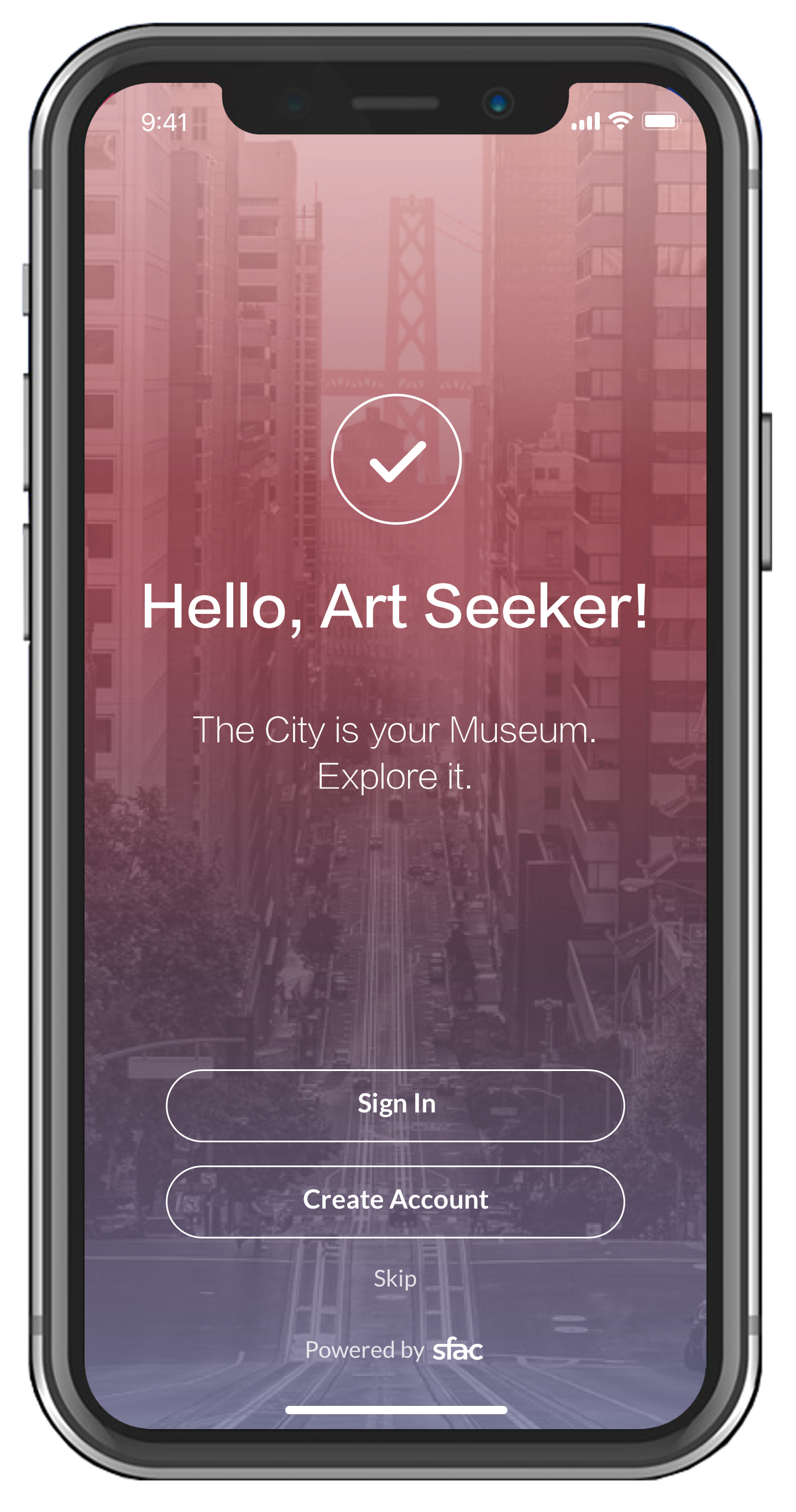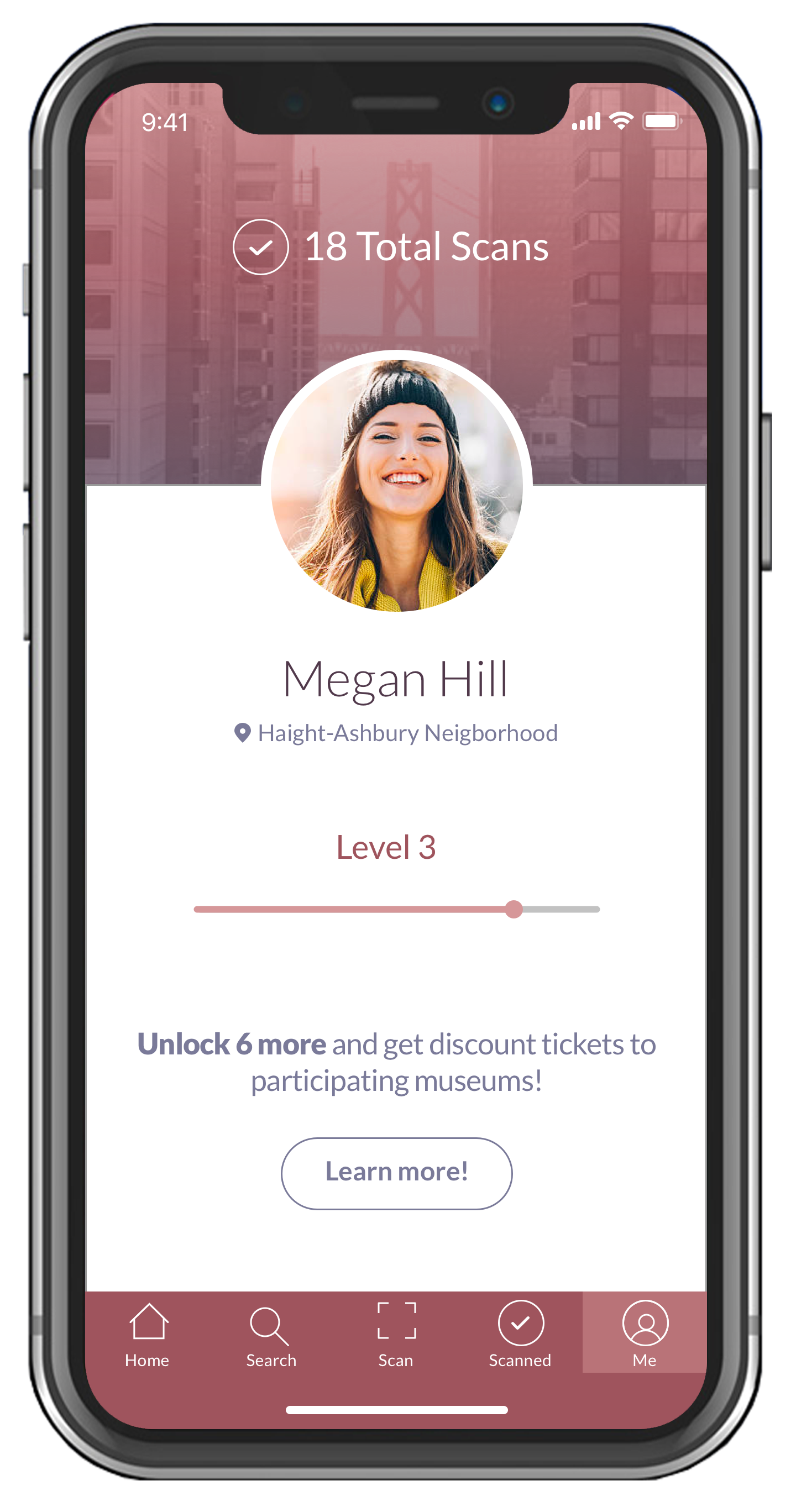Art Seeker app
The Challenge
Established by charter in 1932, the San Francisco Arts Commission (SFAC) is a city agency that champions the arts. As of late, SFAC has received complaints from the community that their most recent investments for public art have been of questionable value. Knowing this, SFAC wants to engage the public to help prioritize what public art they should invest in for the future.
The solution
We designed an app that allows users to access information about public art throughout San Francisco by scanning a QR code. The app will store and manage all the art scanned and provide suggestions for other art based on the user's previous scans. Through this platform, users can also learn about SFAC's plans for future public art and learn how they can participate in the process.
Details
Team & Duration: I worked closely with another UX designer for the duration of 2 weeks
My Role: UX Researcher // Visual Designer
Tools & Methods: Paper & Pencil // Survey // User Interviews // Contextual Inquiry // Wireframes // Prototyping // Usability Testing Target
Project Goals
SFAC
- Provide information about future art plans
- Receive feedback about future art plans
- Promote programs and events
What platform is needed to accomplish these goals?
THE PUBLIC
- Receive information about future public art
- Voice ideas about future public art
- Engage with art throughout the city
Key Research takeaways
We began by evaluating SFAC's current website and social media to get a better understanding of the current platforms in place. We also gathered more information by conducting a survey and a series of interviews to measure the public's overall awareness and level of engagement for public art in the city. Through this research we were able to pull the following key insights:
LACK OF TRANSPARENCY
After reviewing SFAC's platforms, we found that it was very difficult to find information about upcoming public art. The website catered to artists and not to the public. Their social media streams were not actively sharing information or engaging it's followers. This lead us to believe that the current delivery of information is not sufficient. SFCA needs an alternate platform to provide information.
MISSED OPPORTUNITY
According to our survey, over 50 percent believed that it is important for the public to be involved in the public art selecting process. However, the majority said that they had never participated. When asked why, they said they are usually unaware of any public art plans or they don't know where to look. If the SFCA reached out to them, they would be willing to voice their opinions and participate.
ENGAGING WITH ART
"When I see good art, I usually do what?" The top 2 responses to this survey question were to take a picture and to share. Both these interactions are already provided through applications like facebook and instagram. This lead to focus on the third response: learn more about the art. Interviewees stated that when they came across a good piece of art, it was difficult to find information.
Hypothesis
If we create a learning experience for public to discuss and engage with the arts in San Francisco then people are more likely to voice their opinions and therefore will be more apt to take part in prioritization of investments.
ideation
How do we provide this information? We started by asking when and where would the user needs this information. They need it at the moment and location of interaction with public art. We referred back to our interviews where we learned that the majority discover art by an accidental encounter or word of mouth. These interactions became a key touchpoint that drove the design. We created storyboards to show how we can replicate the interactions using a mobile app.
ACCIDENTAL ENCOUNTER
In this scenario, the user runs into public art by accident only to find himself wanting to know more about it. He notices the QR code which prompts him to download the app and scan. Once downloaded, he is able to scan the QR code and access information about the art making him have a greater appreciation for it.
WORD OF MOUTH
Through our interviews, we learned that people are more likely to check out art if someone recommends it while they are in close proximity. In this scenario, we have the user walking along and receiving a notification that there is a mural he might like just a block away. Since he is so close, he decides to go and check out the art.
Design
Welcome Screen
Sign In Screen
Home Screen
Search Screen
Art Information Screen
Scanned Art Screen
Profile Screen
Notification

















